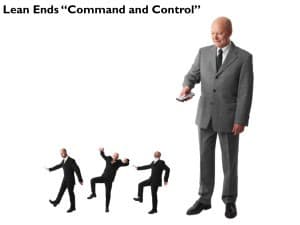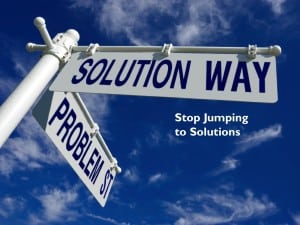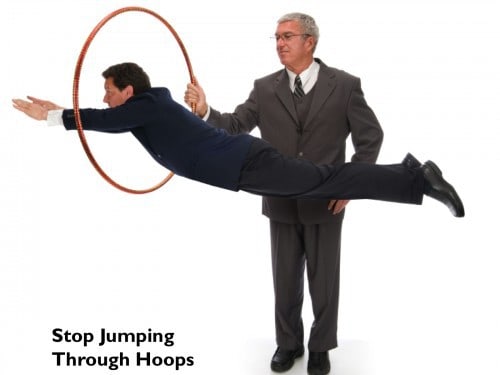I really enjoyed having the chance to be in Cincinnati yesterday to participate in a Lean Healthcare workshop put on by TechSolve, a non-profit consultancy that teaches process improvement methodologies, including Lean, across multiple industries. We had well over 100 healthcare attendees from Ohio, Kentucky, and Indiana in attendance.
My main theme was talking about “Bridging the Gap” – the gap between where we are today and perfection and the gap between today's healthcare culture and a “lean culture.” I talked about some of the key mindsets of Lean that apply well in healthcare.
The themes I covered were:
Lean is Obsessively Customer (Patient) Focused
Lean is very customer driven. You might ask, what the heck else would healthcare be OTHER than patient focused?
Unfortunately, many healthcare organizations have structure and organized things around the convenience of the organization, the convenience of surgeons, etc. An example of not being patient focused would be a real example of a hospital only performing trauma surgery on Tuesday and Thursday? They've eliminated traumas from occurring the other five days of the week? We need to make sure that our improvement efforts are also focused on things that are important to the patient (like waiting times) instead of just focusing on trivial, easy problems.
Silos. Are. Bad.
More important than value stream maps would be having the mindset of looking at end-to-end patient flow and to focus on value and value streams, rather than suboptimizing departmental silos.
No Technology Silver Bullets
Quoting Principle 8 of “The Toyota Way“:
“Use only reliable, thoroughly tested technology that serves your people and processes.”
I shared an example of a hospital lab that had, unfortunately, automated a bad process – saving labor but more than likely increasing turnaround time for the lab (as I've seen in other labs). The lab tore out the technology and used creativity instead of capital, creating a “cellular” layout that reduced turnaround times while not requiring a major increase in staffing levels.
Problems are Treasure
As opposed to problems being something that would be hidden or covered up. We have to honestly recognize problems before improvement can occur.
Lean Ends “Command and Control”
 We had a good discussion, as part of this section, about standardized work not being coercive in a Lean setting. We shift our leadership style from auditing and policing people to a style of coaching and challenging and mentoring – and asking “why?” instead of writing someone up when they aren't following a standardized process.
We had a good discussion, as part of this section, about standardized work not being coercive in a Lean setting. We shift our leadership style from auditing and policing people to a style of coaching and challenging and mentoring – and asking “why?” instead of writing someone up when they aren't following a standardized process.
Stop Jumping to Solutions

People generally love jumping to solutions,. It shows that we're action-oriented… but we often don't understand the real problem and we don't understand the root cause. Here, we talked about the discipline of the A3 problem solving process and the PDCA mindset.
Go to Gemba
This is a very common Lean theme – hospital leaders are as prone as anyone to be away from the gemba, due to meetings and email. Before I talked, a Senior VP from a health system talked about his personal transition away from just waiting for reports to going to the gemba. He went from being “90% focused on results, 10% on process” to having a more 50/50 view.
Problem solving, leadership, and kaizen can't be done effectively from an office or conference room.
No Tradeoffs
 You could almost call Lean the “No Tradeoffs System,” as following these principles leads to reductions in errors, waiting time, and cost. Cost is an end result of improving quality and providing better service and reducing waste.
You could almost call Lean the “No Tradeoffs System,” as following these principles leads to reductions in errors, waiting time, and cost. Cost is an end result of improving quality and providing better service and reducing waste.
As I shared on Monday, there are many examples of applying Lean to clinical care – improving quality is the way to cost reduction – it's far more effective than “cost cutting” as a primary focus – and it helps win hearts and minds in healthcare.
Stop Jumping Through Hoops
Instead of fighting the same fires each and every time, it's time to focus on improving systems and processes – investing time in preventing problems instead of always reacting. And I love this imagery:
And finally:
Don't Blame
 And, as Dr. Deming taught us – don't blame. More than 90% of defects and problems are the result of the system. Instead of being biased toward blaming an individual, we have a bias that it's likely the system, unless proven otherwise.
And, as Dr. Deming taught us – don't blame. More than 90% of defects and problems are the result of the system. Instead of being biased toward blaming an individual, we have a bias that it's likely the system, unless proven otherwise.
I recorded, on this topic, a great podcast with Aubrey Daniels, the co-author of the new book Safe By Accident?, where one of the points is emphasizes is that blaming and punishing individuals doesn't improve safety – although management might feel good for “doing something.” Look for that podcast 2/17 or so.
Those are the main themes I presented. It's not an all-encompassing list, I realize. What mindsets would you add? What examples or stories about the mindsets I shared would you add?
Thanks to TechSolve for organizing a fantastic event – we had a very engaged audience today, so thanks.
Please scroll down (or click) to post a comment. Connect with me on LinkedIn.
Let’s work together to build a culture of continuous improvement and psychological safety. If you're a leader looking to create lasting change—not just projects—I help organizations:
- Engage people at all levels in sustainable improvement
- Shift from fear of mistakes to learning from them
- Apply Lean thinking in practical, people-centered ways
Interested in coaching or a keynote talk? Let’s start a conversation.











[…] This post was mentioned on Twitter by The Lean Library and Garments Engineer, Lean News Feeds. Lean News Feeds said: From LeanBlog Lean Mindsets for Healthcare: I really enjoyed having the chance to be in Cincinnati today t… http://bit.ly/f8owvc #lean […]
Just have to say that this post uses some of the best stock photography ever.
(that wasn’t my only takeaway :), was just amused by them)
:-) Thanks. Yeah, I bought the images to use in my presentation. I’m trying to have better visuals and things that are thought provoking in a way other than having bullet points on a slide.
Mark:
Nice as a summary of lean impacts, generally.
Here’s a story re. “Lean ends command and control”: Customers visiting us yesterday made the observation that in our workplace “everybody knows what to do!”. They could see how standard work and visual controls became a platform for AUTONOMY of workers. Management supports and challenges, but doesn’t need to tell people what to do. A far cry from the fear that standards are straitjackets.
It’s notable that AUTONOMY is one of the factors that Daniel Pink identifes as a key to intrinsic motivation (loved the podcast). My one difference with Pink is that he focuses on knowledge workers, while I think lean allows it to be true for everyone. Maybe because everyone becomes a knowledge worker? “At Toyota we don’t pay people to come to work, we pay them to come to think” – Taichi Ohno
Yes! As Toyota also says, everyone has TWO jobs at work:
1) To do the work
2) To improve the work
That’s such a simple statement and such radical thinking for the sad “do as you’re told” organizations.
[…] This post was mentioned on Twitter by Mark Graban, Rafael Nascimento. Rafael Nascimento said: RT @LeanBlog: Great comment on Lean not being "command and control" -#Lean Mindsets for Healthcare – Lean Blog http://lnbg.us/1nN […]
Great stuff, Mark. Love the topics, the tone, and the emphasis on system and culture, not tools.
I would add to Silos.Are.Bad. that roles can be also a silo in healthcare and not just departments. Nursing, Providers, Residents, and supporting people like RT, nutritionists, ect sometimes optimized around their respective roles. Lean hospitals require strong teams that are optimized for the patient.
I agree, Brian. While we often focus on making sure people are making the most of their education and skills (such as letting nurses focus on nursing work by offloading appropriate tasks to CNAs), that shouldn’t lead to an attitude of saying “those tasks are beneath me” to the point that people can’t step up to be part of the team, as needed.
I think it’s OK for a nurse to occasionally work “below pay grade” but if that’s a continual ongoing thing, then maybe there’s too much waste in the system or there aren’t enough CNAs to properly support the nurses.
I don’t know if you chose the best example Mark… I would view CNA’s as being the same silo as the professional nurses (RNs etc.)… but since we both agree with Brian, I shouldn’t complain.
Sure – I chose silos in one dimension, RNs having a higher pay and education level than techs/CNAs.
There’s the other dimension of RN/CNA, physician, and pharmacist for example. The innovation of ThedaCare’s Collaborative Care is the three groups working as a single integrated care team.
You made a great point during the presentation — sometimes even though we complain about a problem with a simple solution, we often forget to just take the initiative to just fix the problem…we all laughed at your example but a great reminder…
[…] Lean Mindsets for Healthcare by Mark Graban – “Problem solving, leadership, and kaizen can’t be done effectively from an office or conference room… Instead of fighting the same fires each and every time, it’s time to focus on improving systems and processes.” […]
[…] had the most amazing morning a few weeks ago when I was in Cincinnati for the TechSolve lean healthcare event. Thanks to a friend of my sister’s, I was able to spend a few hours at Cincinnati […]
[…] what are some of the Lean Mindsets (an earlier talk of mine) that can be learned and transferred from manufacturing to healthcare? Some of the aspects of a Lean […]
I happened to stumble across this in a google search, I love it!
I appreciate that, although culture was not explicitly mentioned, the majority of the mindsets are about altering the culture to support Lean, rather than focusing on teaching and applying Lean tools and processes. Without changing the mindsets that support the previous way of functioning, Lean tools and processes will fail.
[…] It’s not about speeding people up or telling them how to do their work. (See my post on “Lean Mindsets“). […]